ICE's Crackdown on Visa Holders and US travelers: Steps to Plan & Protect Yourself
What everyone needs to know about USCIS, CBP, and ICE extreme vetting policies.
Photo: Mani Albrect | CPD
[Note: this initial post was updated on 3.21 to reflect a new travel advisory to the US. It will be revised as new updates for specific visa holders are reported.- ac]
3.20.24.
To readers: this is a very long, detailed newsletter, chock full of specific steps to take for US travelers and different visa holders to increase their security while entering, traveling, and exiting the US. Given the rapid escalation of Trump 2.0 crackdowns and moves to criminalize anyone deemed critical of its policies, it’s essential for anyone traveling to review needed documents and consider precautionary steps to assure safer travel and re-entry. I invite you to share this information by restacking this post and sharing content on your social media, and help sound the alarm. I’ll update it regularly. — Anne-christine d’Adesky
In this newsletter:
ICE is engaged in extreme vetting of US visitors and visa holders: how do you protect yourself while leaving or re-entering the US?
Fresh Warnings for H-1B, J-1, F-1, and L-1 visa holders
Steps to Protect Yourself When Exiting or Returning the US
Know Your Rights
What they may look for
If you are a US Citizen
If you are a Green Card Holder
If you are a Conditional Green Card Holder
If you are a refugee/asylee Green Card Holder
Tips for Green Card Holders before you travel or seek re-entry into the US:
If you are a Green Card Schengen Visa holder
Advanced Parole
Non-Immigrant Visas & new travel advisories to the US
H-1B Visa Holders
H-4 Visa Holders'
Visiting Scholars and Foreign Students (J-1, F-1) - plus new Spring Break guidance warning from some US universities
H-2 Visa Holders (H-2A, H2-B)
TPS Visa Holders
L-1 and L-2 Visa Holders - with tips for employers
Extra resources: check out our campaign website for more tips.
ICE is engaged in extreme vetting of US visitors and visa holders as well as undocumented immigrants — and citizens.
How do you protect yourself while leaving and re-entering the US?
Recent media headlines are sounding the alarm about the “extreme” vetting that US Citizenship and Immigration Services (USCIS), Immigration and Customs Enforcement (ICE), and US Customs and Border Control (CBD) agents are doing of foreign travelers and visa holders, including those with employment-sponsored H-1 B visas, J-1 visiting scholar and F-1 student visa holders.
They are reporting the escalating threats and palpable fear felt by foreign students and scholars who are being targeted by ICE and fear being labeled terrorists for their participation, or merely being in a crowd observing, past pro-Palestinian or anti-Trump campus or street protests. As a result, several US universities — Brown, Columbia, Cornell, among them — recently issued guidance statements urging foreign students to avoid traveling overseas to go home during Spring Break March 22 to 30 — a sign of how threatened students and universities feel.
Trump’s moves to expand the resurrected Muslim travel ban (now covering 40 countries), and claim wartime powers with the Alien Enemies Act, have increased fears of arrest, detention, and disappearance, into the bowels of ICE hell before being deported, possibly to an El Salvador torture facility like some Venezuelans accused of being Tren de Aragua gang members. The tale of the recent arrest and detention of an H-1B visa holder, Canadian actress Jasmine Mooney, has gone viral, escalating fears of the unfolding crackdown. We reposted her chilling testimony in yesterday’s Substack to help sound the alarm.
Mooney’s experience revealed that the visa holders picked up by ICE that she encountered while detained included women who overstayed their visas (some knowingly), had visa irregularities, or were in the process of revalidating visas. But ICE also picked up – and are indefinitely holding – individuals who had tried to fix their visas, or got detained trying, as Mooney did, while taking action to revalidate an expiring work visa. Her testimony revealed how for-profit private contractors to ICE, including Core Civic and The Geo Group, are invested in keeping detainees inside the bowels of the ICE detention system because they get paid as long as they keep them.
Other reports show Trump’s immigration dragnet is being aimed at Green Card holders who have perfectly legal status. CBP officers have reportedly increased their scrutiny of Indian Green Card holders, especially elderly individuals who winter in India, for example, pressuring them at airports to sign Form I-407, voluntarily abandoning their permanent residency. Those who resist reportedly face threats of detention or deportation.
Credit: Brenda Bazán / San Antonio Report
Fresh Warnings for H-1B, J-1, F-1, and L-1 visa holders — and new country travel advisories for travelers to the US
Immigration lawyers and activists are now warning H-1B visa, F-1 visa, and J-1 visa holders, and some green card holders who may be vulnerable to ICE targeting – think transgender individuals, Venezuelans, Palestinians and broadly, Muslim and Arab visitors -- to “think twice about leaving the US.” Immigration officials are pulling aside travelers they deem “suspicious” and checking their phones and computer tablets for evidence of any support for pro-Palestinian protests or other criticism of Trump, which is being newly conflated with an association with terrorism in some cases. A visiting French scientific scholar was denied entry into the US for text messages on his phone criticizing Trump’s cuts to science funding. Other academics are being similarly charged due to their association with individuals supportive of the protests.
Two German tourists and one who is a US permanent resident were also denied entry into the US; one was arrested. WGBH reported that Green Card holder Fabian Schmidt, 34, was stopped at a Boston airport in Boston then transferred to a detention facility in Rhode Island. His mother, Astrid Senior, told WGBH that her son was "violently interrogated" at the airport before being stripped naked and forced into a cold shower by two officials.
Canadian, French, and German officials have protested these cases, and are questioning if the US has changed its immigration policies for its nationals. German revised its travel advisory for the US in the wake of the German cases. “Berlin has updated its travel advice for the United States to stress that holding a US visa or entry waiver does not guarantee entry for German citizens,” Germany now advises. Britain has also weighed in: its new travel advisory warns UK citizens that anyone found breaking US entry rules could face arrest or detention. New Zealand also upgraded its US travel advisory, while other countries are monitoring the issue. All of it is bad for America’s tourism and travel industry, and US business, say economists.
Lawyers are defending the travelers.
Civil rights attorneys and activists alike now recommend that travelers inform their schools, sponsors, or employers in advance of any travel, and make "contingency plans" in case re-entry with an H-1B or J-1 or F-1 visa is blocked.
Steps to Protect Yourself When Exiting or Returning the US
Below, I’ve consolidated practical tips from seasoned immigration attorneys and advocates, along with links to updates from USCIS and Department of Homeland Security (DHS) fact sheets. The top one is: always check the rules and your documents well before you travel.
That includes visa-holders who are traveling out of the US for restamping or updating expiring employment-sponsored visas. They note that even if USCIS approved an H-1B visa, a consular officer can still reject the application and request re-adjudication. It’s extremely important to carry paper documents you may need to show in a carry-on, not just digital copies, should you be interrogated and your phone be taken, which has occurred recently to H-1B visa holders and as happened with Jasmine Mooney. She also had means to fly herself back to Canada, while many do not.
Multinational employers should freshly focus on the needs of employees on L-1 visas who may face interrogation and their need for rapid digital access to company proof of employment documents and counsel from in-house attorneys. Some are preparing guides for such employees, including how to make such contingency plans.
Be aware of wait times for visa application processing and that there may be delays given the Trump regime’s gutting of federal agencies. Here is a link for more on wait times. And here is a little primer, culled from the ACLU, on what to do if you get stopped at the airport.
Image: Sandy Huffaker | Getty
Know Your Rights:
Immigration and Customs and Border Patrol (CBP) officers have the legal right to check your telephone, laptops, and tablets at the border, when you come in from international flight. Sometimes they may start looking through it through it, may attach external device or cord to download. While it’s an obvious invasion of privacy, it’s legal. If you are a visa holder and refuse, you may not be able to enter the US. They may also confiscate your phone.
Inside vs. outside the US: The US Constitutions only applies inside but not outside of the US. So when you are in the arrivals customs area before re-entering, you are technically, legally, still outside the US.
Traveler tips - avoiding worst-case scenarios:
Travel with a dedicated travel device, not your real phone. Consider a cheap “burner” or secondary phone: many people already do that to travel with phones and load up local SIM cards and save on international phone charges. Load up your important trip numbers.
Or, if you take your phone, back up important files before you go, and take any possible compromising pictures, text messages, and important files off your phone.
If you lose your phone, you may not get it back. It may less headache to travel with a new second phone for that reason, too.
Create a long password, or use two-factor authorization.
You are not required to share your password, but if you refuse, they may take your phone away and still not allow you into the country.
Sign out of important apps, limit cloud access, try to encrypt your device.
If your phone taken, try to write down everything that happened, and try to write down the names of CBD officers interrogating or delaying you.
Try to always remain calm. Do not argue, do not protest, do not get in anybody’s face. This will backfire, say immigration advocates. You will not help your case by refusing CBP requests that are legal.
Plan in advance for notifying people or employers of your travel plans. Who will you call if you have a problem? Do you know an attorney or legal agency to contact for help?
If they take your phone, who will you call and how? Write down important numbers on a piece of paper so you have them apart from on your phone. Be safer.
What they may look for:
CBP and USCIS may look for what you have written in terms of social media, especially text messages, and possibly emails. They are eyeing anything critical of Trump’s policies that could constitute a threat to national security— in their eyes.
They are also looking for possible visa violations: if you are entering on a work visitor’s visa, but the officer finds text messages or emails to people where you are discussing working in the US, that is in direct contradiction of the purpose of your visit (see Non-immigrant visas further down). So evaluate your own risk: look at your social media from the eyes of a USCIS or CBP officer. Anything concerning?
“It is better to hand over your phone and ask the officer that you wish to withdraw your application for admission to the United States. That way the officer may say, you are only going to return to your country and there are generally no immigration consequences when you do that,” advise immigration attorneys at Shihab and Associates, a US immigration law firm with offices in different cities.
That said, the current political climate is fraught, so you must educate yourself to be aware of any possible consequences, and know your rights. Unfortunately, there are increased reports that ICE officers are ignoring traveler or visa holder’s rights once they are in ICE custody.
Photo: NBC News
If you are a US citizen:
You should always be traveling with a current passport. It must be current for the duration of your trip.
US citizens only have to give an ID (Passport, or other travel document) and travel details, but your phone may be confiscated if you get pulled over by an agent upon re-entry.
It’s recommended to travel with a second ID that has your picture, and may establish your residence — though not required. A Real ID has already been vetted through some law enforcement systems.
Have any important numbers written on a piece of paper on you, in a worst case scenario of losing or having your phone taken. The goal is reducing risk, which is losing your ability to communicate to others about your situation if any problems.
If you are a Green Card holder (Permanent Resident):
you are advised to travel with a passport from your country of origin, and always carry your Green Card and Employment Authorization Document (EAD) or other proof of ‘alien’ registration in the US with you for the duration of your trip.
You may be subject to more scrutiny. See tips below for those traveling under and over six months.
If you plan to be out of the US for over a year, you may need a Re-entry Permit (Form I-131). Green card holder who travels outside the US for over a year may lose their Permanent Residence status. If revoked, you must obtain a new immigration visa based on an approved immigration petition or Returning Resident status.
For Conditional Green Card holders:
You must file Form I-751 (Petition to Remove Conditions on Residence) before your trip, as your conditional Green Card may expire – check the date before, too.
If you are a refugee/asylee Green Card holder
you will need a Refugee Travel Document obtained prior to travel (see details below).
Tips for Green Card Holders before you travel or seek re-entry into the US:
Before you travel:
You may be subject to more scrutiny. Before you travel/ seek re-entry in the US:
Check the expiration date of your Green Card: Make sure your Green Card is valid for the duration of your trip and any possible extensions.
If your card is lost or damaged, apply for a replacement immediately.
Six-month rule:
You are allowed to travel for six months (180 days) – not more -- without jeopardizing your Green Card: any trip longer than six months may risk losing your Permanent Resident Status, which is needed to become US citizen (naturalization). Plan your trips to be shorter than six months.
If you plan to stay outside the US longer than 180 days:
If you exceed the six-month limit for Green Card travel abroad, you may be questioned about your prolonged absence. Expect that. You must be able to convince the CPD officer that you always meant to return to the US or your risk losing your Green Card status. The is a “conclusive presumption” that you abandoned your permanent residence status in the US if you overstayed your visa period.
To avoid that, you must apply for a Re-Entry Permit before leaving the US. It is valid for up to two years, and creates a “rebuttable presumption” that you are not/did not abandon your permanent residence status in the US.
Note: A Re-Entry Permit preserves your residency for Green Card purposes. BUT it does not do so for naturalization (citizenship) purposes. You must file a Form N-470 if you are eligible.
You must keep records of your employment, home ownership or rental status (lease), tax filings, or family ties to show you have not abandoned your residence.
It’s a good idea to take these steps and have these types of documents available/with you to prove your residence upon re-entry:
Keep bank accounts open.
Have evidence of ownership of property.
Have evidence of renter’s or owner’s insurance (auto or rental).
Continue to file your tax returns.
Have proof that you returning to resume employment.
The above documentation will help assure that you are not accused abandoning your permanent status.
It is always useful to have digital photos of your documents on your phones, but some also recommend paper copies, if the event you lose your phone or it is confiscated.
Photo: ma8 - stock.adobe.com
Green Card Schengen Visa:
If you are a third country national, and you have not yet established a visa-free regime with the European Union, you must apply for a Schengen visa when traveling with a Green Card. The Schengen visa permits entry to 26 European countries within the Schengen geographic area. The travel visa will allow Green Card holders to enter and stay within the Schengen zone for up to 90 days within a 180-day period.
Embassies or consulates of Schengen countries can process your visa application and there are strict rules that apply on where you should schedule your visa appointment. You must apply at the embassy or consulate of the first Schengen zone country you plan to visit. If you apply at the wrong embassy, you will be rejected. Many have online portals for a portion of the visa application. You may reschedule your visa appointment for a future day but only a maximum of two times. After that, you have to resubmit a visa application.
If you are late or miss your appointment, you must re-apply after 24 hours. Visa application processing times vary; some may take up to two months, so plan ahead. Visa fees are a standard USD $84| 80 Euros for adults; $43 | 40 Euros for children 6 to 12; free under age 6. Application visa fee waivers may be available under some circumstances including humanitarian reasons, researchers doing non-Schengen country scientific research; a staff member for diplomatic mission.
Tips for Schengen visa applicants:
You may be required to attend an in-person meeting with embassy/consular offices and this process may take time – so plan ahead.
You are required to travel with Schengen travel (medical/health) insurance policy which is part of your visa application. (Aegis insurance is one company providing such insurance). Applicants will be asked to present a proof of travel health insurance to the embassy or consulate with their visa application.
You will need to know the number of countries you plan to visit, how many days you will stay in each country, and which Schengen zone country you will first enter. If you only visit one country, it serves as the diplomatic representation in your country of residence.
Lost or Damaged Green Card:
If you lose your Green Card while traveling abroad, you must file form I-131A, Application for Travel Document (Carrier Documentation). You must submit this to a US embassy; if/when approved, it will allow a Green Card holder to apply for a temporary travel document. (You must also file for a replacement Green Card asap).
Visa-free travel for Green Card holders:
Green Card holders may travel outside the US to the following countries that extend them the same rights as US citizens. They are considered “visa-free” countries. It is always recommended to check with the US embassy before you travel to review visa rules of a given country, and always travel with recommended documents.
Visa-free countries are: Canada | The British Virgin Islands | Mexico |Georgia | Aruba and Curacao | The Balkans | Costa Rica | Singapore | Peru
Address changes:
Id you move, notify USCIS of address changes using Form AR-11 (Change of Address).
For those with a Pending Immigration Benefit request:
You may need to apply for, and obtain, travel documents before leaving the US.
Refugee Travel Document:
If you are have refugee or asylee status and got your Green Card holder through that status, you may apply for a Refugee Travel Document instead of a foreign passport. You must submit Form I-131 before you travel and get it approved and carry it with you to present, if requested, upon re-entry into the US. The Refugee Travel Document is valid for a year and cannot be extended.
Note: If you are an asylee, you may not return to the country from which you are seeking asylum or you may lose your asylee status. Always check with USCIS or an immigration rights nonprofit or attorney if you have any questions or concerns.
If you are currently outside the US, and have this status, you must file Form I-131 within one year of your last departure from the US, with an explanation for why you failed to apply before departure. The USCIS office that oversees your application will review your application.
Advanced Parole:
Some persons who have a pending adjustment of status application may use an advance parole document to travel, but it must be applied for, and obtained, before you depart the US. If you do not, your asylum petition may be considered abandoned. The Advance Parole may be available to younger persons under the Deferred Action for Childhood Arrivals Program (DACA).
Emergency travel:
If you need to travel outside the US for an urgency, you might consider seeking an expedited processing of your travel documents. This usually costs money, including shipping.
Non-immigrant visas
Non-immigrant visa holders may travel abroad – but as recent visa holders have testified, you must be sure your work visa is in order.
You will require an I-94 visa and it must be current.
Well before you travel to/from the US, check the rules if you are traveling with a work visa (see Tips for traveling Hb-1 visa holders further below).
Warning:
US airport and CBP officials are reportedly closely scrutinizing work visas and non-immigrant visitor documents at ports of entry and exit (sea, air). Any visas that are expired or have irregularities may be flagged, and could lead to serious trouble with ICE, so organize your visa documents before you enter or exit the US and know the rules for your visa. Take into account the time it may take to get a paper copy of an I-94 record.
TIP: Always carry proof of your visa status on you or in your carry-on. Consider having a photo on your phone, digital copies on the cloud, and a paper copy for additional security.
Form I-94:
Form I-94 is the Dept. of Homeland Security (DHS) Arrival/Departure record issued to aliens who are admitted to the US, who are adjusting status while in the US, or extending their stay, among other things.
A CBP office generally attaches the I-94 to the non-immigrant visitor’s passport upon US entry. The visitor must exit the US on, or before, the departure date stamped on the I-94. Failure to do this last step could get you flagged by USCIS, CPB or ICE. The DHS has now automated form I-94 for air and sea entry, and it will no longer be made available on paper to travelers, except in limited circumstances. The traveler will be provided with a CPB admission stamp on their travel document.
If a traveler needs a copy of their record of admission for verification of alien registration, immigration or employment status, they can obtain this from the DHS at: www.cbp.gov/I94
TIP: Getting a paper copy is a new recommended step by immigration advocates for non-immigrant visitors/travelers with HB-1 visas, who may lose their phones if they are interrogated by USCIS, CPB or ICE upon exit or re-entry to the US.
When departing, non-immigrant travelers should surrender their paper I-94 forms to the commercial carrier or CBP. If their travel record was created digitally, CBP will record their departure using manifest information (details of flight or trip, etc.) obtained from the carrier (airline, ship).
How do you update your expired non-immigrant travel visa without your I-94?
The CBP will create an electronic I-94 record of your admission to the US. CBP will verify the I-94 electronically to re-validate your expired visa if the traveler meets the conditions of automatic revalidation. If you entered the US with a paper I-94, before the process of automating that system, you must present the paper form in order to comply with the requirements for revalidation. Read here for details.
Here is a DHS fact sheet about the I-94 rules for non-immigrant visitors (and with HB-1- visas).
Well before you travel to/from the US, check the rules for traveling with your work visa. Always carry proof of your visa status with you. Consider having a photo on your phone, digital copies on the cloud, and a paper copy for maximum security.
Tips for traveling H-1B visa holders leaving or returning to the US:
Tell your employer you are going to travel, where and for how long – before you plan your trip. There could be delays. H-1B stamping will require fingerprinting, interviews, and could see delays. You don’t want be in a situation why you are not back to work or in the US; you want your employer to hold your job until you return. Review that with your employer before, not after, you depart for a trip.
Be sure you have all your documents including H1-B Labor certification documents.
Carry paper printouts and photos on your phone of: salary slips, income verification letter, any tax returns, your full H1-B application, birth certificate and keep these with you in a carry-on, not your checked luggage.
Your employment verification letter should state your current employment, when started, your duties, and be signed by your employer. Recommended: copies of most recent pay stub.
Carry proof of US residency: Make sure your passport has a visa stamp and there are no misspellings of the visa. The name must match your passport. Residency proof: Print out a copy of any rental lease or property ownership. You may be able to present an electricity bill with your name on it if less than six months old.
Carry your driver’s license of state ID; check that you have an updated Real ID.
If you are needing help or have concerns, the ACLU and National Immigration Law Center has long provided free information, services and tips for immigrants, visa holders and US citizens. There are also many private legal firms who specialist in helping non-immigrant visa holders. A quick online search will turn up local firms in your area.
The ACLU’s Know Your Rights resources is a good place to start for immigrants, but also different visa holders — and US citizens — who plan travel.
Photo: ICE
H1-B and other employer-sponsored visas:
For H1-B visa holders: The H-1B is an employer-sponsored, non-immigrant visa classification that allows temporary work up in the U.S. in specialty occupations for up to six years, with very limited exceptions. There is mounting evidence that returning H-1B and other employment-based visa holders face new scrutiny when entering the United States. Many employers are discussing this with their Human Resources departments and in-house counsel, and discussing proactive steps to support traveling employees. Making digital records available for them is one step.
While Project 2025 calls for capping H1-B visas, the issue caused a war of words in MAGAland. Many conservatives want all immigrants removed, but Elon Musk and his cyber bros made their case that they need Indian and other top engineer hires to assure US dominance in the AI and cyber spheres. On Dec. 28, 2024, Trump publicly declared himself “believer in H-1B.”
"Employer-sponsored" means that the employer must apply for the H-1B on behalf of the prospective H-1B employee through the United States Citizenship and Immigration Services (USCIS) (link is external).
"Specialty occupation" means a position that requires specialized knowledge and skills, and at least a bachelor's degree in that specialty. H-1B status is available to a person who has been offered a temporary professional position by a U.S. employer. Generally, professional-level occupations in engineering, biological, physical, social sciences, mathematics, and business administration will qualify for H-1B. A bachelor's degree is always the minimum requirement for an occupation to qualify for H-1B status, but depending on the position, an advanced degree (Master's or Ph.D.) may be necessary.
Tips and recommended steps for H1-B visa applicants:
It’s recommended to apply for the H-1B visa at least six months prior to planned employment in the US. (With current Trump cutbacks at federal agencies, this time period may not be longer.) The process involves the Dept. of Labor.
The total processing time at DOL including prevailing wage determination (if necessary)/ LCA, and USCIS processing can take as long as six to seven months or longer. You can check current processing times at the USCIS website. The USCIS HB1-visa work rules are here.
HB-1 visas are subject to a cap, but the rules are currently shifting under Trump. It is highly recommended that applicants or pending H-1B visitors to the US check with their employers and attorneys regarding current regulations and the experiences of H-1B visa holders prior to travel.
H-4 visa holders:
The dependents of H-1B status holders (legal spouse and children under age 21) can apply for H-4 status.
H-4 status holders are not eligible to work except in limited situations. For more information please visit this USCIS web page.
Photo: CBrenda Bazán / San Antonio Report
Visiting Scholars and Foreign Students:
USCIS and ICE are actively targeting visiting foreign scholars, teachers, and students who hold non-immigrant visas. Since 2023, ICE has moved to arrest student protesters, and suspend or expel students participating in pro-Palestinian campus actions, while ICE has recently escalated moves to arrest, detain and deport foreign students. They are being labeled “supporters of Hamas” and risk being charged with crimes of “terrorism” by association since Hamas is classified as a terrorist group by the US.
Immigration advocates now warn visiting researchers and other scholars and students that ICE and pro-Israel allies in a national Task Force Against Anti-Semitism, actually led by a group of Christian nationalist organizations, not Jewish ones. Several Trump 2.0 Cabinet members are involved. The Task Force is actively seeking evidence of any student or scholar participation in campus protests or activities that could be grounds for dismissal, cancellation of their visas, and expulsion. The Task Force and ICE are getting help from the pro-Zionist group Betar, among others, which has filmed many campus protests and uses AI agents and facial recognition software to identify protesters, then scours social media sites. Betar’s reported hacking of emails, phones, and text data, have also been turned over the ICE.
Trump has also sought to claim wartime powers to claim the US is at war via resurrection of the Alien Enemies Act, being aimed first at Venezuelans suspected of being in the Tren de Aragua gang. He has also said anti-Semitism is a threat to America and it’s being equated with domestic terrorism, and called “un-American.” His directive is being used to justify USCIS, DHS and ICE actions to secretly surveil and target individuals with visas who are suspected – not proven – of being in violation of the Trump regime’s new rules. They too, risk being labeled domestic terrorists.
Demand for protection of visiting faculty, students:
All of this makes it imperative for schools and institutions who sponsor or hire visiting scholars, and are tasked with supporting visiting foreign students, to provide guidelines for their safety while on campus and also while traveling abroad. Those who are considering travel outside the US or are returning to the US should contact sponsors to be sure their paperwork is in order before any travel.
If you’re a J-1 or student visa holder, you should plan for the worst-case scenario: the possibility of interrogations or delays at re-entry, and the need to have a contingency plan should you be stranded in transit. You should include the telephone numbers on a piece of paper on your person while traveling of key contacts at your school r sponsoring institution and, ideally, their legal counsel, should there be trouble while traveling. CBP agents seek to verify evidence to support a given visa — that is their job. So have that easily available to show them. Include copies of letters of invitation to attend a conference if you’re a visiting scholar or speaker. Have a digital copy on your phone, and keep a paper copy in your carry on. Be prepared for ease of mind.
J-1 visa holders:
The U.S. Department of State allows US institutions to invite visiting research scholars to visit the US for short period as J-1 scholars, via the J Exchange Visitor Program. The prospective J scholar must be invited by an academic department or lab who serves as their host. It generally takes about 2-6 months for a UCB department to bring a J-1 scholar to campus. Some cases may take longer depending on U.S. Embassy/Consulate visa security clearance processes. For more details, see Inviting J-1 Exchange Visitors.
An employer may request up to three years on the initial H-1B petition and extensions may be requested for a maximum period of three years. An employee is allowed to hold H-1B status for a total of up to six years. The H-1B allows for the possibility of applying for an immigrant visa in the future. The intent to remain permanently in the U.S. will not jeopardize the H-1B nonimmigrant status.
For more H1-B and H-4 visa holder details and FAQs, see information and resource from the International Office in Berkeley.
F-1 Student Visa (Academic Student):
The F-1 visa allows individuals to enter the United States as a full-time student at an accredited college, university, seminary, conservatory, academic high school, elementary school, or other academic institution or in a language training program. Your school must be authorized by the U.S. government to accept foreign students. Students must be enrolled in a program or course of study that culminates in a degree, diploma, or certificate of an approved school.
M-1 Student Visa (Vocational Student)
These includes students in vocational or other nonacademic programs, other than language training.
Travel tips for F-1 student visa holders:
You can travel outside the US if they have obtained prior approval from your Designated School Officer (DSO) and maintain valid (non-expired) F1 documents. This includes a valid I-20 Certificate of Eligibility for Non-Immigrant Student Status, and an Employment Authorization Document (EAD). Documents should be carried on your person, or in a carry-on.
Your passport must be valid for at least six months after the date of your reentry. (If you are an M-1 student, it is recommended that you bring your most recent Form I-94, “Arrival/Departure Record,” with you as well).
Before you travel:
You must check that your record in the Student and Exchange Visitor Information System (SEVIS) is up-to-date and in Active status. Do that with your DSO. (You do not need to repay the I-901 SEVIS Fee to reenter the United States after travel.)
Make sure that your DSO has signed your Form I-20, “Certificate of Eligibility for Nonimmigrant Student Status” within the last year, and that you are not leaving the country for more than 5 months.
Have your DSO’s most up-to-date contact information, including both a daytime telephone number at the school and a 24-hour emergency phone number, before you leave.
You must have a valid F1 visa stamp in your passport, and your passport must be current and not expiring during the period of proposed travel outside the US, which can’t be longer than five months. You can be denied re-entry into the us if your passport, F1 Visa stamp, and Form I-20 have expired.
If you have a pending practical training application, it is not recommended that you leave the US, since USCIS sends only requests for evidence to your U.S. address; you don’t want to miss a critical request. If you get your EAD, you must travel with it on you during your trip abroad.
If you entered the IS but do not have all your signed required documents, have not paid the I-901 SEVIS Fee on your current Form I-20 or lack a SEVIS status issue, a CBP officer may issue you a Form I-515A Notice to Student or Exchange Visitor that allows you entry for up to for 30 days, in order for you obtain and submit the proper documentation to SEVP.
If you were issued a Form I-515A, tell your DSO so they can help you submit the right information to complete this form within a month to the Student and Exchange Visitor Program (SEVP) I-515A processing team.
Their address is: Student and Exchange Visitor Program
DHS/ICE
ATTN: SEVIS/I-515A Processing Team
500 12th Street SW STOP 5600
Washington, DC 20536-5600
What happens if a student loses their F-1 status?
There are various reasons a foreign student can lose their F-1 status if the institution, including their failure to report status milestones in the SEVIS system, as required, or if they lose SEVP certification due to compliance violation. They may also lose their visa status due to:
A student Commits a crime warranting removal from the US.
Note: ICE is accusing students of anti-Semitism, which the Trump regime is classifying a terrorism by association crime.
Leaving the US and seekig re-entry without the proper documents (passport, up-to-date I-20, valid visa)
Here is a basic overview of what to do if you lose your F-1 status, written generally, and without taking into consideration the Trump crackdown.
Photo: David Bacon/PW
H-2 visa holders (H2-A, H-2B) & seasonal/guest workers
The US economy heavily relies on the labor of seasonal workers, including seasonal agricultural workers who help grow and pick the harvest of fields across the US, and a big portion of the foreign construction workforce that helps build US homes and offices. Trump’s immigration attacks on undocumented immigrants, and now visa holders, has caused shocks to these sectors, as H2 visa holders stay home, afraid of being picked up in an ICE raid. It’s estimated that half of agricultural workers in the US are undocumented. Farmers, ranchers, builders, real estate, mortgage, banking, the food industry, and other industry officials are sounding the alarm about the negative impact of the Trump immigration sweep on these industries.
Project 2025 called for putting a cap on H2 visas, and even going after employers who hired undocumented workers – a further move to criminalize not only immigrants, but those who hire them. The dragnet thus targets US employers, just as it does schools sponsoring foreign faculty or visiting exchange students. Project 2025 also pushed for warrantless ICE raids on workplace sites, which has further panicked employers and sent workers into hiding.
The H-2A visa is used for agricultural workers and represents 70% of H-2 issuances; the H-2B is for non-agricultural workers represents the remaining 30%. Over the past decade, H2 visas have increasing significantly , growing approximately 15% annually on average.
Trump’s plan and backlash by industry leaders:
Project 2025 called for putting an eventual cap on H2 visas that allows individuals who are sponsored by employers to work in agricultural and non-agricultural sectors (especially construction) on a seasonal basis, but it saw major push-back when citrus picker and construction workers in Florida, California and Texas stopped showing up for work, terrified of ICE raids. The impact will decimate these industries, warned state industry leaders in these sectors; they have lobbied the Trump team for waivers to allow them keep hiring their seasonal help.
While the U.S. agriculture sector is the most affected, as well as the housing and real estate market due to construction labor shortages, the H2 visa policy affects other industries, including landscaping and groundskeeping sectors. These account for 39% of approved H-2B labor certifications. As it stands, 92% of employers experiencing some difficulty finding good landscaping employees. States with seasonal tourism including Florida and Virginia employ more than 20,000 H-2B workers in food-related hospitality jobs, such as waiters and dishwashers.
Trump has been a steady employer who has increasingly relied on foreign labor. He hired over 1,000 H-2 workers in the past two decades as cooks, bartenders and other food workers, some as staffers at his Mar-a-Lago club.
On Dec. 2, 2024, DHS and the Department of Labor (DOL) jointly published a temporary final rule increasing the FY 2025 cap on H-2B nonimmigrant visas to 64,716 additional visas. Of these, 44,716 visas were available only for returning workers (workers with a prior H-2B visa or H-2B status in one of the last three fiscal years). The remaining 20,000 visas are set aside for nationals of El Salvador, Guatemala, Honduras, Haiti, Colombia, Ecuador, and Costa Rica (a country-specific allocation) who are also exempt from the returning worker requirement.
Protecting H2 workers:
Since Trump’s election, the American Business Immigration Coalition and other employer-side lawyers and organizations have increased trainings to prepare workplace managers for what to do if ICE or other federal law enforcement officials come to their door. Others have prepared toolkits for employers, urging them to work to verify worker documents, and have plans with employees with visas traveling to and from the US to complete work contracts. One hiccup is that employers can’t easily verify possibly false documents using the E-Verify platform used to hire employees.
Tips for H-2 visa holders and employers:
Employers are urged to establish workplace site rapid response teams and communications plans in case of ICE raids to workplace sites that can led to arrests, disappearance of workers into the ICE system, and deportations that are very difficult for employers or family members to track.
Rapid response teams include legal, policy and humanitarian co-coordinators to support families of workers detained or deported, who may be family breadwinners. One guide by the NILC covers what employers can do to prepare for ICE raids – and community advocates, too.
H-2 visa holders are urged to do what all visa holders must: keep digital copies on a phone of their work and visa documents and have printed copies at home or in a safe, accessible, fire-proof place, as well as proof of residence and other documents on them at all times. That is true whether they are traveling to work while in the US or seeking to leave or re-enter the US.
They should notify and work with employers before their plan travel outside or return to the US, and review any contingency plans in the event of a delay or problem in re-entry.
NILC and other immigration advocacy organizations provide a Know Your Rights handout for immigrants. All should have the name and phone number of an available lawyer at hand, in the event of an encounter with ICE.
Many organizations have provided 800 hotline numbers and online resources for pro bono legal help. New York City’s Mayors Office for Immigrant Affairs (MOIA) has a MOIA Immigration Legal Support Hotline that has referrals for other states, too. Check with the ACLU for other state-specific free legal help.
TPS visa holders:
Some individuals arriving in the US hae been granted a Temporary Protected Status because their country of origin has been given that classification, based on a humanitarian criiss, or political conditions, among reasons. When that TPS status is graned, any nationa of that country or stateless person habitually living in that country who is already in the US can apply for protective status. Anyone arriving after that date – if TPS is ended – cannot apply for protective status. As of March 24,000, there were an estimated 863,880 TPS recipients live in the United States.
A country’s TSP status is usually for 6, 12, or 18 months, and may be extended by the Secretary of Homeland Security. If the status is “redesignated,” anyone from the country who came to the US after the original designation an apply for TPS protections. If this designation is extended, the TPS protections are extended for those individual to the new date.
Trump moves to end TPS for Venezuela and Haiti:
Project 2025 called for ending TPS programs and even retroactively eliminating them –— a long-held conservative movement goal. The Trump administration has followed suit, calling for an end to the TPSprogram in Haiti as well as Venezuela, both failed states where gang violence is high and millions of citizens have fled political violence and economic disaster.
In response, the National TPS Alliance and eight Venezuelan TPS holders have filed a suit to stop DHS Secretary Kristi Noem from “illegally revoking an 18-month extension” of TPS for Venezuelans that the Biden administration granted in January. IF it stands, 350,000 Venezuelans will lose TPS on April 7 and another 250,000 are likely to lose it by September 2025, instead of retaining protection through October 2026.
Who is eligible for TPS:
A national, or a habitually stateless resident, of a country with TPS
You must be continuously physically present in the US since a country’s TPS designation;
You must have continuously resided in the US since a date specified by the DHS Secretary; and
You must pose no threat to the U.S. for nefarious, criminal or national security-related reasons, determined by the relevant U.S. agency.
NOTE: Temporary Protected Status does not provide a path to a green card or citizenship; but neither does it eliminate any eligibility nor prevent anyone eligible from applying for citizenship.
Steps for TPS travelers to take before leaving the US:
Consult with a lawyer familiar with the Haitian TPS rules before you plan to travel or apply for travel documents to understand any risks and what steps are mandatory.
TPS travelers must have valid documents including their passports, and any Employment Authorization Document if they are working in the US. It’s recommended to have proof of residence of living in the US and any work documents. (Rental leases, recent work stubs, etc.)
You must apply for travel authorization in advance of travel using Form I-131, Application for Travel Documents, Parole Documents, and Arrival/Departure Records.
If it is approved, DSH will send you, Form I-512T, Authorization for Travel by an Alien to the United States, to serve as evidence of DHS’s prior consent to your travel outside the US.
If a U.S. CBP officer determines that you are eligible, they will admit you into TPS upon your return. Note that if you were previously granted parole, this admission will render you ineligible for a new period of parole.
If DHS Is still processing your TPS application, and you wish to travel outside the US you must apply for travel authorization. If it is approved, you will be issued you a Form I-512L, Advance Parole Document, to serve as evidence of DHS’s prior consent to your travel outside the United States.
If you are filing Form I-131 together with Form I-821, send your forms to the address listed for your country. If you are filing Form I-131 separately based on a pending or approved Form I-821, check the Direct Filing Addresses for Form I-131 page.
Warning:
If you have TPS and leave the US without first obtaining prior TPS travel authorization, you may lose TPS and may not be able to reenter the US.
If you have a pending TPS application and leave the United States without first obtaining advance parole, your application for TPS may be denied, and you may not be able to reenter the United States.
As noted above (see Advance Parole), if your application to travel is still being processed, USCIS sends requests for information and notices via mail too your US address, so you may miss this if you are traveling. If you fail to respond to these, you’re application may be denied.
As with other visa holders, you must travel with updated valid documents: a Passport from your country of origin, your valid TPS documents, and EAD if you are working. You should take digital photo copies of documents on your phone and keep paper copies of all your documents on your person or in a carry-on.
Given the fluid political situation, it’s important to check for any updates in the TPS program. A full list of TPS countries can be found here.
L-1 visa and L2 holders:
The L-1 visa allows allows multinational companies to transfer employees from foreign offices to work temporarily in the U.S., specifically for executives, managers, or those with specialized knowledge. The multinational ust be a parent, branch, subsidiary, affiliate, or joint venture partner of the non-U.S. employee.
L-1A visas are for intracompany transfers of managers and executives and are allowed a maximum initial stay of three years and may be extended up to 7 years. L-1B visas are for intracompany transfers of employees with specialized knowledge amnd may be valid up to 5 years.
Green Card: L1 visa holders may apply for a Green Card: L-1A visa holders are usually eligible for the EB-1C (Employment-Based Immigration: First Preference) green card, which does not require labor certification via the Program Electronic Review Management (PERM) process; those with L-1B visas typically apply for the EB-2 or EB-3 green cards, which do require labor certification.
An L-2 visa allows the spouse and unmarried children under 21 of an L-1 visa holder (to live in the U.S. for the duration of the L-1 holder's authorized stay.
Traveling with L-1 visas:
L1 Visa holders can travel outside the U.S. and re-enter, provided they have a valid L1 Visa stamp in their passport.
Steps for L-1A and L-1B visa holders to take before traveling:
Similar tips apply to L1 visa holders as other non-immigrant visa holders: they must have a valid Passport, and a valid visa stamp in it that will be valid for the duration of their trip.
They should carry digital photo copies of their travel documents, and paper copies of their L1 visa applications, as well as documentation from their employers that state their current position and duties.
It is advised to have proof of US residency and a recent work pay stub and a signed letter from an employer stating one’s work status.
L1 visa holders should inform their employers of any travel plans in advance, and have contact information and a contingency communications plan in the event of a delay in re-entry to the US.
It’s important for employers to make the in-house counsel or an outside counsel contact number available to L1 visa holder who are traveling. Companies that do not have in-house immigration counsel should aim to make sure employees have their outside counsel contact or or whoever handles the company’s immigration processes.
Multinationals are also urged to consider putting PERM audit files and paper records into digital forms versus paper records in case the Dept. of Labor requests records for employees related to visas and employment verification, as the delivery time to produce such records may be short.
Extra resources: check out our campaign website for more tips.
We have posted a summary breakdown of Project 2025’s proposals in the area of immigration that are being implemented now by Trump’s regime that are found on our Resisting Project 2025 campaign website.
We also list get-help resources and links to front-line immigration groups, including more tips for dealing with ICE and taking steps to protect your personal, family and community safety.
I invite you to share any resources you may have with us and any alerts about cases of ICE and USCIS deportation cases involving visa-holders as well as other immigrants. I would appreciate feedback to know if this information has filled a need and any other burning questions or concerns you may have related to travel into and out of the US. -- AC

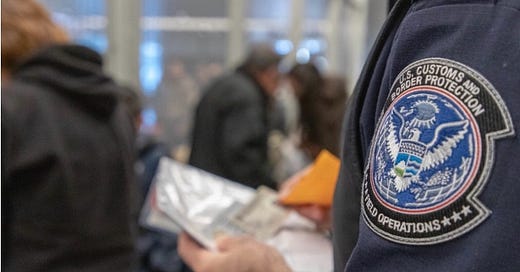



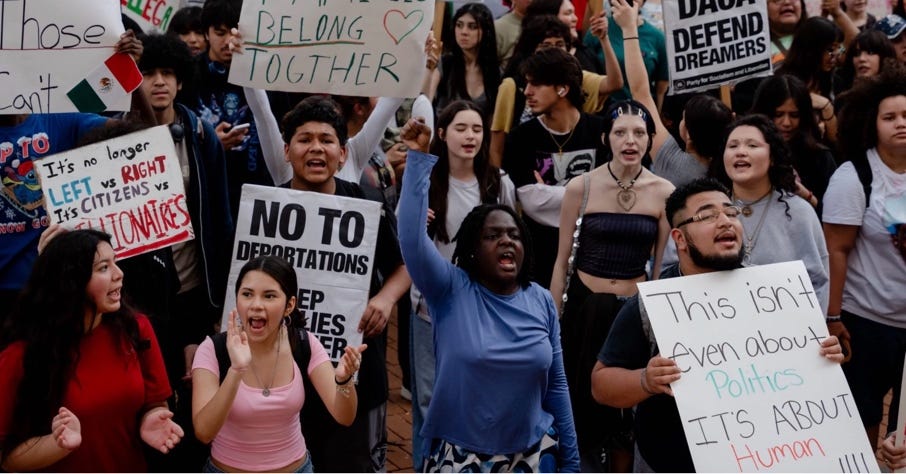
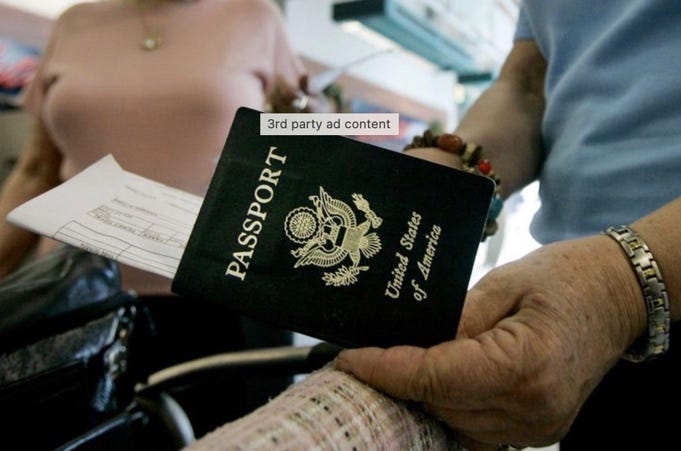
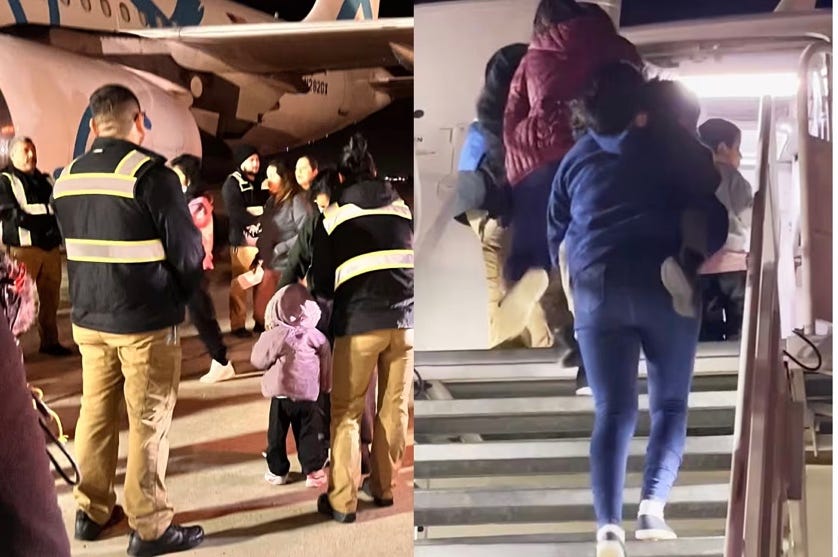
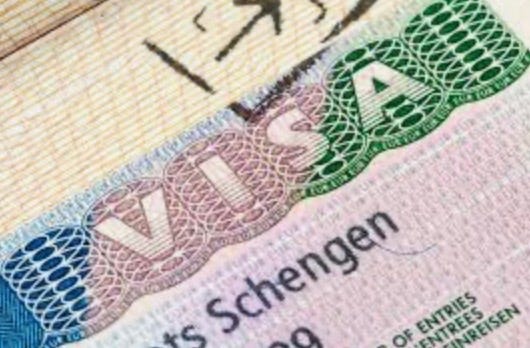
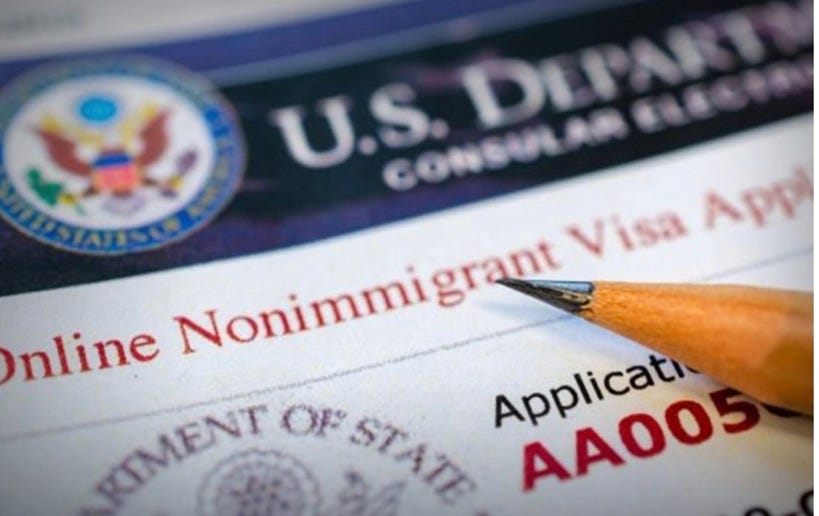
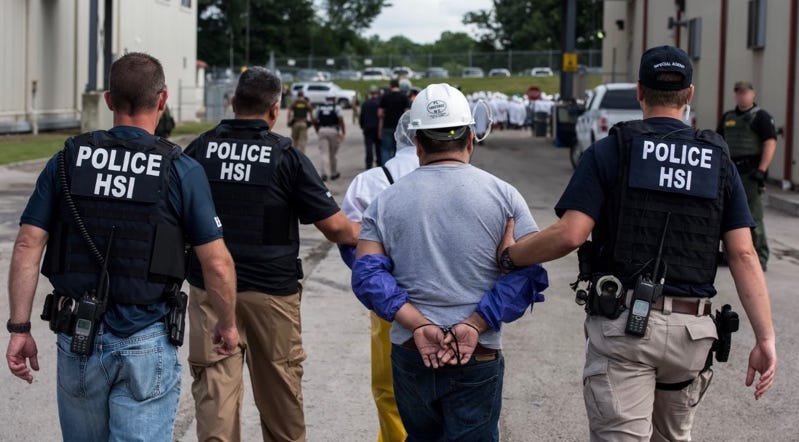
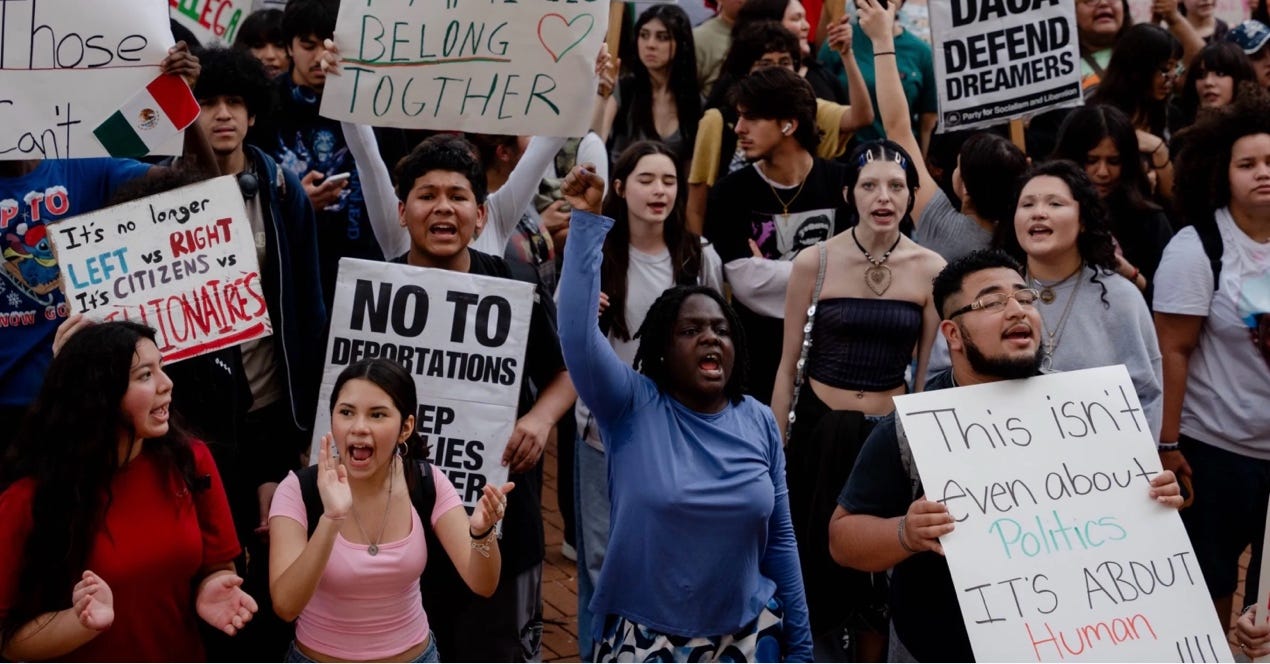
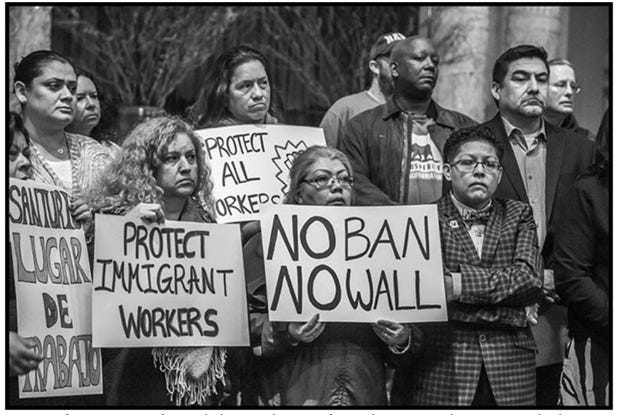
Hi Holly,
you are not alone. We are all absorbing the crackdown on foreign visitors. I can just recommend that you check your phones and make sure it doesnt' have anything on there you don't want customs people to see. At entry, customs officials CAN and may do expedited screening, even of citizens returning. One tip: do not use fingerprint sign on to your phone but use password. You must open your phone with fingerprint if asked but you aer not required to tell them your password. IF you declined, youu could get your phone confiscated, though. So I plan to travel with a burner phone and a laptop that is clean so I don't have to worry about this when I go abroad. I don't have the bandwidth to go through 10000 photos and zillions of emails. They can also go through text messages, etc. Bottom line: make sure your phone or computer don't have anything that would worry you. Most people won't. But anyone going to pro-Palestinian protests should be aware that that content is a priority for admin. -ac
This is what happens when government entities are privatized.
The more people ICE private “subcontractors” arrest, the longer they’re held, the more money they get.